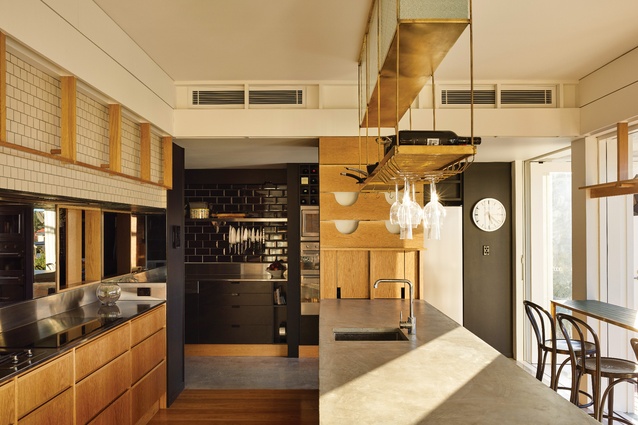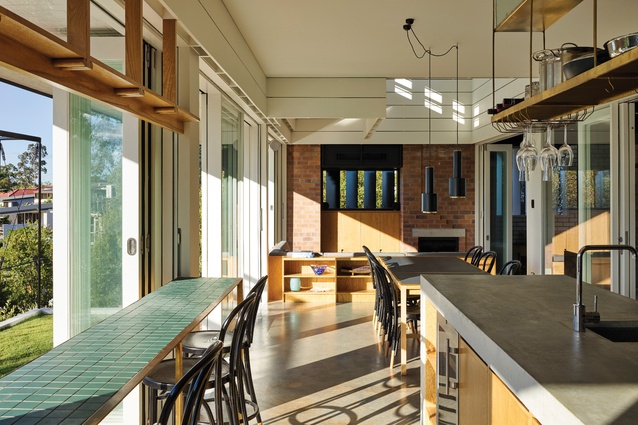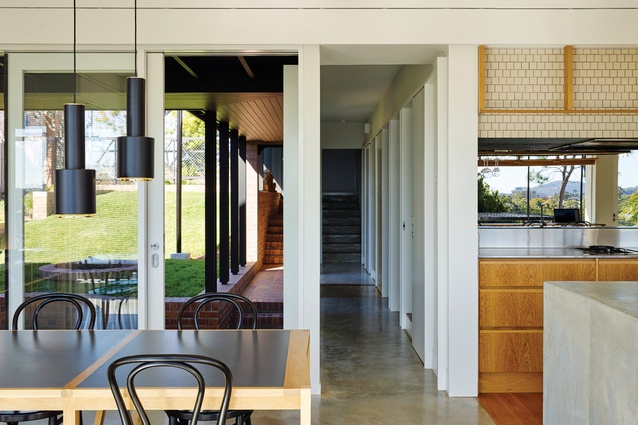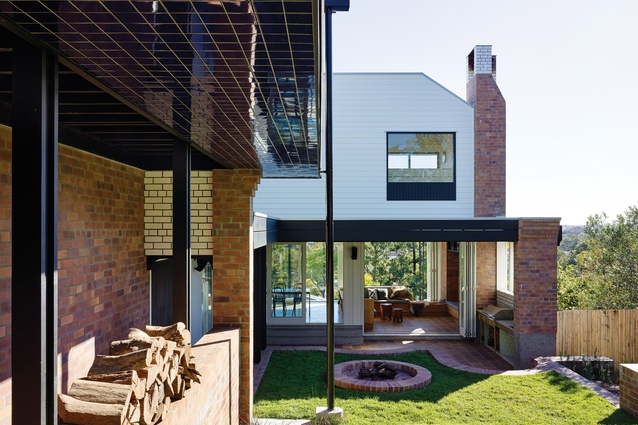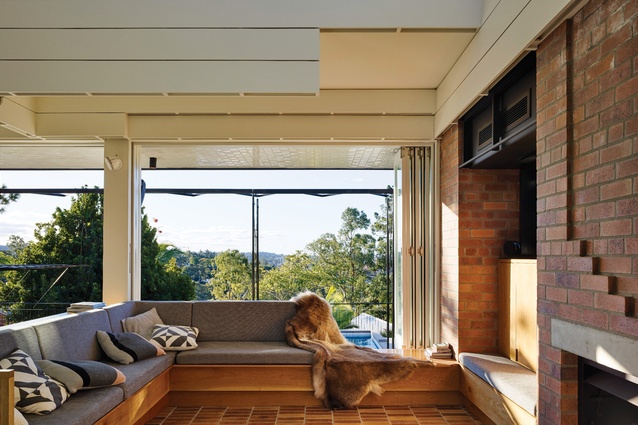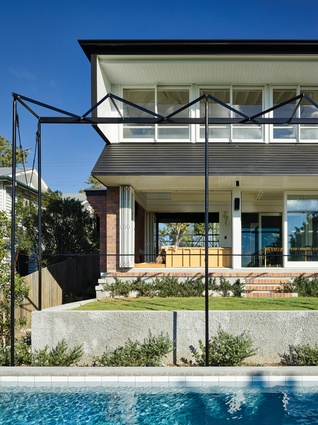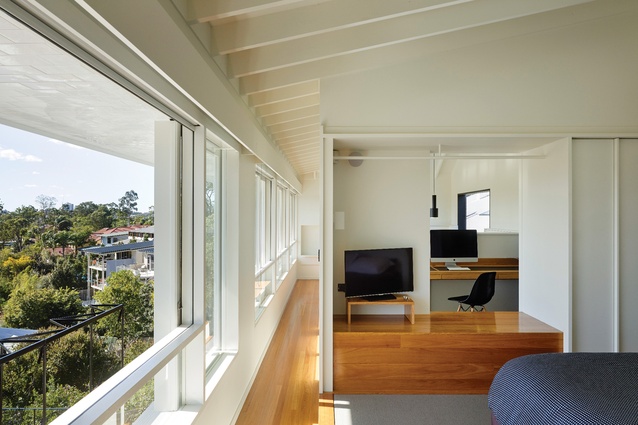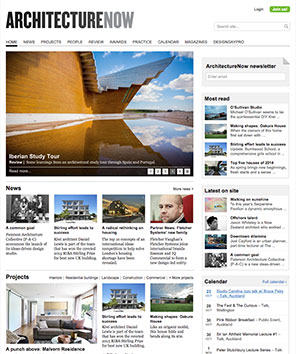Suburban narratives: Central Avenue
This new house by Vokes and Peters employs traditional architectural motifs in unconventional ways, all the while responding to its site, street and city.
Vokes and Peters’ Central Avenue house, located in the Brisbane enclave of St Lucia, continues an intriguing narrative in the practice’s growing catalogue of domestic architecture. In this iteration, the historic cottage is notably absent, replaced instead by the roles of landscape, street and city to which the new building responds with cordial intelligence, restraint and exuberance.
The avenue on which the house is sited aligns to an elevated ridge connecting the suburban landmarks of a primary school and two churches with a string of detached dwellings. The convivial scenes of school run and church gathering have an almost cinematic attraction, yet, as the architects observe, new homes mostly abandon opportunity for neighbourly exchange in favour of ridge-top views of the city. Central Avenue works hard to ameliorate such imbalance.
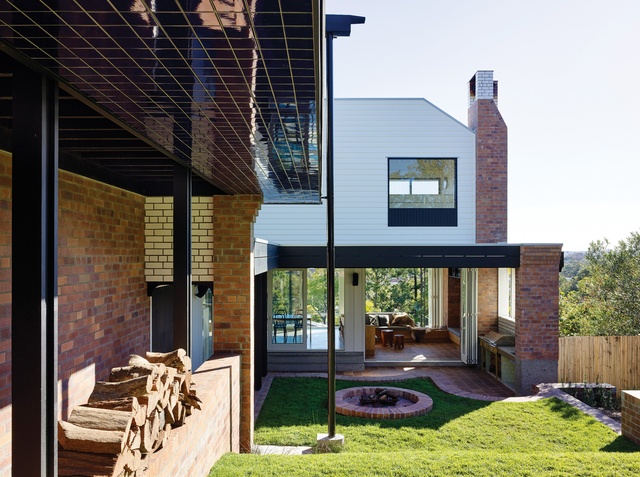
In its simplest form, the plan comprises a two-storey building with an undercroft, courtyard and terrace. The former is consistently slender in section and bends in an L-shape to contain the garden courtyard. At street level, this takes the form of a rolling lawn that descends gently before being interrupted by a curved brick ledge to become a garden patio beside the sitting room. The terrace on the northern and opposite side of the building is a paved plateau dedicated to commanding views over rooftops and to the panorama of Taylor Range and the city.
The defining architectural expression takes place where building, courtyard and terrace collude. Most legible in section, this corresponds to the double-height sitting room that mediates the secluded courtyard to the south and the vast open terrace to the north. Where the fixed timber settee presses hard against glass walls, the immediacy of the edge heightens the sensation of an unfurling landscape beyond. A continuous brick floor reinforces this sensation. Beginning life at the front gate as a garden path, the brick “floods” building edges and the sitting room interior before continuing its cascading descent into the backyard and ha-ha, eventually dissolving into Brisbane’s interminable terrain.
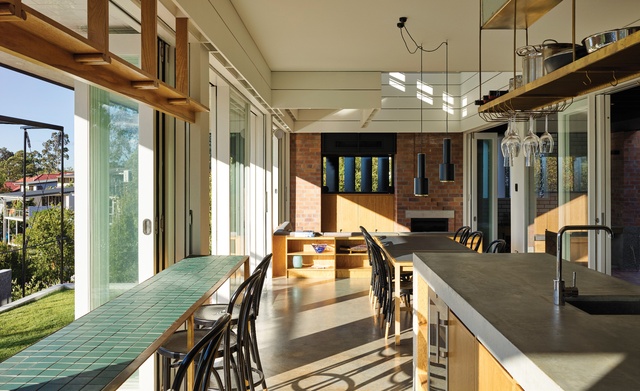
Intimacy of scale, spatial fluidity and material richness all play their part in making the most slender part of the building feel all-encompassing. Brick and concrete embed the building in earth, while timber expresses lightness and volume. Horizontal hardwood timber boards in white encircle the ceiling void and gallery, amplifying the verticality of the space and illuminating changing light conditions throughout the day. After dark, brick and timber merge warm and tactile in the tight huddle of the fireplace setting. In the kitchen, bespoke shelves and light boxes fashioned in timber, brass and decorative glass add further embellishment to the reflected lights of the city captured in the panorama of the mirrored splashback.
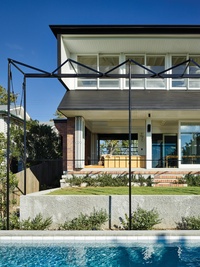
The public nature of the “skinny room” (the slender living space that includes the sitting and dining rooms) is reaffirmed by transparent sides that frame candid scenes of domestic life and the cityscape beyond the building. In a reciprocal gesture, the same transparency encourages family life to engage in a casual way with the landscape (natural and human-made) as well as the theatre of the street and public world. The “terminus” space that hovers above the sitting room offers the ultimate refuge in a place that is otherwise visually exposed.
The building exterior entertains ideas about the economy of materials and the luxury of detail. Complexity is achieved by the adjacency of contrasts: dark and blonde brick, charcoal and white-painted weatherboards. Richness manifests in the decorative expression of brick corbels to cap brick pillars, the flickering pattern of brick stretcher courses and headers and the polished faces of eaves.
Texture, pattern and colour are layered skilfully in a tapestry of handmade exuberance. With deliberate connections made between the brick walls of the nearby Catholic church and those found here, the house is imbued with the neighbourhood and its masonry traditions.
The formal resolution of the building has discernibly post modern tendencies, with traditional architectural motifs applied in unconventional ways. The street elevation, for example, declares a monumental gable form that disappears behind a paper-thin facade. The “flared skirt” of the upper floor borrows its silhouette from the bay window (a cherished element of Brisbane’s vernacular tradition) and stretches it long as a continuous ledge and sun-shading device. Other references are made from observations collected “in the field,” notably the inclusion upstairs of a sleep-out beside the children’s bedrooms, which, like its traditional counterpart, appropriates flexible space in a verandah setting.
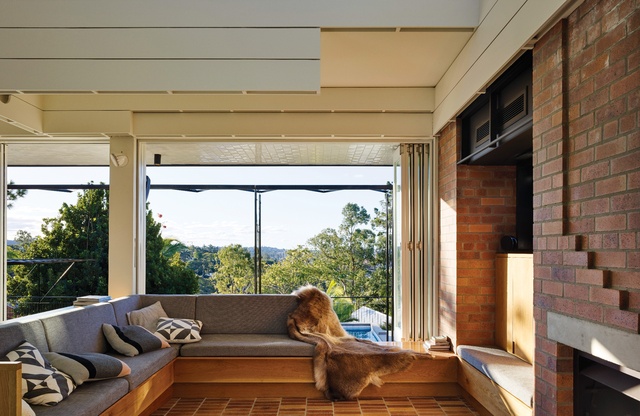
Charged with the then unprecedented freedom of designing a new house, director Aaron Peters found affinity with the thinking of British architect Edwin Lutyens, who would approach new work as if it were a transformative exercise – like an old house altered or extended. As a guiding principle, this sentiment has served the architect and project well, making sense of and giving weight to many parts brought together here with dexterous cohesion.
In this way the architecture evolves at pace with the exploration and enquiry that develop from within the Vokes and Peters studio. With each architectural iteration, new custodians welcome the delights of home, streets become more civilized and the city emerges richer than before.

